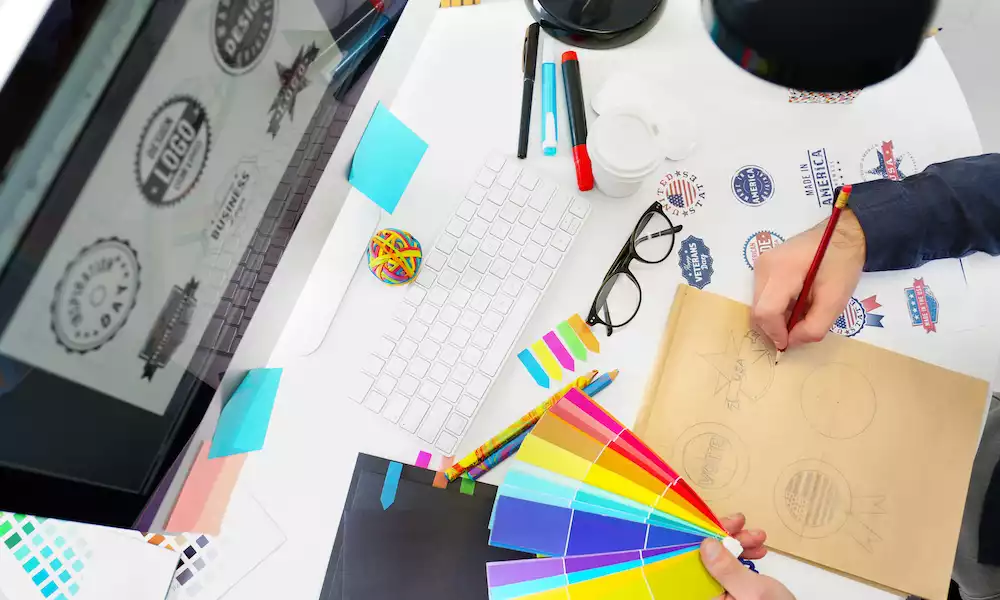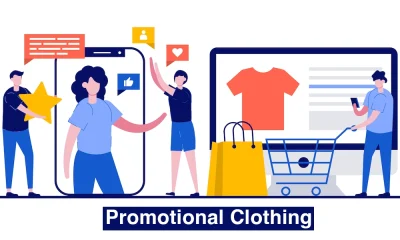Marketing
6 Must-Dos When Designing a Logo for Your Business

Every business needs to have a logo. Regardless of the method you choose to design it, whether using a logo generator or hiring a logo freelancer, it is essential to have a clear vision of the final design before starting the process.
Once you have imagined your logo design, you should think about how it can be created to align with your brand identity.
6 Considerations When Designing a logo
Creating a unique logo design involves a combination of creativity and understanding of the brand or business. See our six must-dos before making your logo.
1. Give the logo a profound meaning
One of the most significant factors determining the success of a logo design process is its intrinsic message or meaning. It is to be noted that simply looking at the logo on a specific product or an advertisement is not adequate to make it perpetually memorable.
It should symbolically convey a deep-seated meaning rather than being just a spectacular visual representation. First, jot down the statement of your brand strategy on a piece of paper. Then, verify if the logo amply conveys it or not. Go for a redesign if you find the purpose lacking there.
The logo should be capable of manifesting its objective backing the design. It should be a succinct optical rendition of your brand. More so, your potential customers must be able to effortlessly decipher and depict the purpose.
2. Give the logo a minimalistic look
One of the sure-shot success drivers in designing a distinctive logo is deleting all superfluous elements. Therefore, retain only those shapes, colors, shades, symbols, lines, and fonts good enough to imply the relevant connotation. Any component that is unwanted and invading the logo space should be banished.
Detach every one of the elements that cause only confusion and clutter. There is no necessity to stuff more to the logo, even if a simple, outmoded prototype is good enough. Such a minimalistic appearance will fortify an easy-going logo that people can admire instantly at a single glance.
3. Give the logo an initial black-and-white portrayal
Please remember that your company logo should look equally awe-inspiring in black and white. There will be many instances of getting your logo printed without colors like your brand advertised in a newspaper, fax messages, photocopies of documents, or stationery bearing the sign of your company logo. The logo will probably be black and white in all these cases.
To comprehend if the logo creates an unforgettable impression, design it in black and white instead of any other color. If the logo illustration does not appeal to you, modify it until you are delighted. You should apply colors when you feel your colorless logo has a worthwhile design. In this way, the trademark will look uniformly sensational in both colored and colorless versions.
4. Give the logo a scalable characterization
An efficiently scalable logo means it does not outstrip its meaning of proportion, which is why every business needs a logo. In that respect, a logo has to be versatile because it can be scaled up or down per the requirements. Therefore, when you display your logo on a giant billboard, it should, from every angle, look proportionate. This is where it pays to know how to hire a logo designer so you get exactly what you need from them.
For example, a logo, when printed on smaller, compact surfaces like business cards, pens, or drinkware, and its design constituents should be clearly identifiable similarly. Utilizing design grid formats is a technique to ensure the logo is proportional to the logo and has a novel, out-of-the-box feel.
Our memory does not fall short for distinctly noticeable things or stand out amongst the crowd. The same rule applies to a company logo as well. A majority of the symbols that we fail to forget are the ones having idiosyncratic designs that are not found elsewhere.
It should not be a clichéd or hackneyed business emblem we often encounter around us. The logo should also exude an element of remembrance in our minds about the company it belo togs the moment we see it.
Hence, create an entity that people can appreciate. Come out with something fresh and innovative. This advice similarly applies to other marketing mediums, even as peripheral as an envelope design. The entire spectrum of your graphic designs should be unique and indelible to create a positive and ever-lasting impression in customers’ minds.
5. Give the logo a real-world visage
Before finally deciding on your company logo, bidding some time and endeavoring to be envisioned across many platforms is crucial. Remember that the logo will have numerous appearances on both online and physical mediums, and every business needs a logo.
The initial proof of a logo may look astounding on a piece of white printer paper. But it does not mean it will deliver an identical stunning impact when emblazoned on a hoarding in front of a building. With the help of mockups and various other tools, the logo’s versatility can be envisaged by the designers.
It needs to be ascertained whether the logo will appear as compelling on a website, t-shirt, mobile app, or packaging design as it would on a letterhead, business card, or stationery. Therefore, before committing to it, envision the logo by taking it into several real-world applications beyond the customary PDF horizon.
6. Use the visual identity graphic design process
A solid visual identity helps create a cohesive and memorable brand image, fostering recognition and trust among the target audience.
Use visual identity graphic design to create a unique and distinctive symbol or logotype representing the brand.
To enhance the brand’s visual identity, incorporate consistent graphic elements, such as patterns, icons, or illustrations. Choose and maintain a consistent set of typefaces and fonts that align with the brand’s style and tone.
You will also need to follow brand guidelines, and it’s recommended to document all the visual elements and rules in a brand style guide to provide a reference for anyone creating materials for the brand.
Finally, establish guidelines for the layout and composition of visual elements in various materials, like business cards, websites, brochures, etc.
Visual identity graphic design aims to communicate the brand’s values, personality, and message through visual elements, thereby establishing a recognizable and memorable identity.
Final Thoughts
Logos and brand identity are essential components of a business’s overall marketing strategy, crucial in building recognition, trust, and customer loyalty.
A logo is often the first visual representation of a brand, and it can communicate the values and personality of the business. A logo can convey these traits to the audience, whether it’s a sense of innovation, reliability, friendliness, or luxury.
A brand identity ensures consistency across various marketing channels, from print materials to online platforms. This consistency helps reinforce the brand message and makes the business easily recognizable across different mediums.






